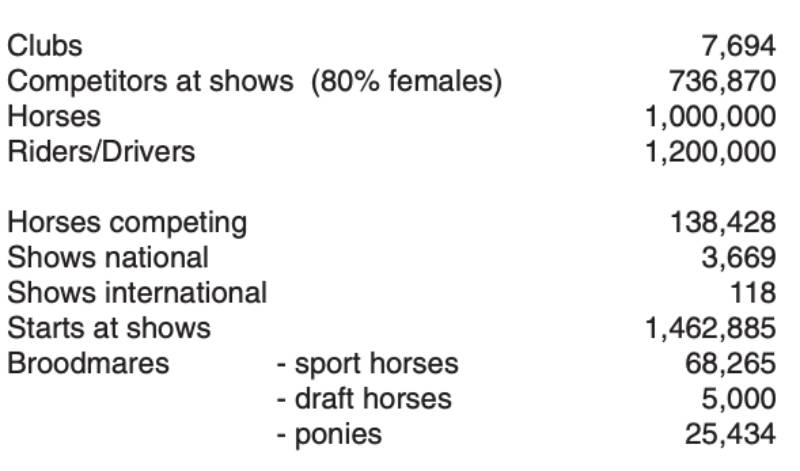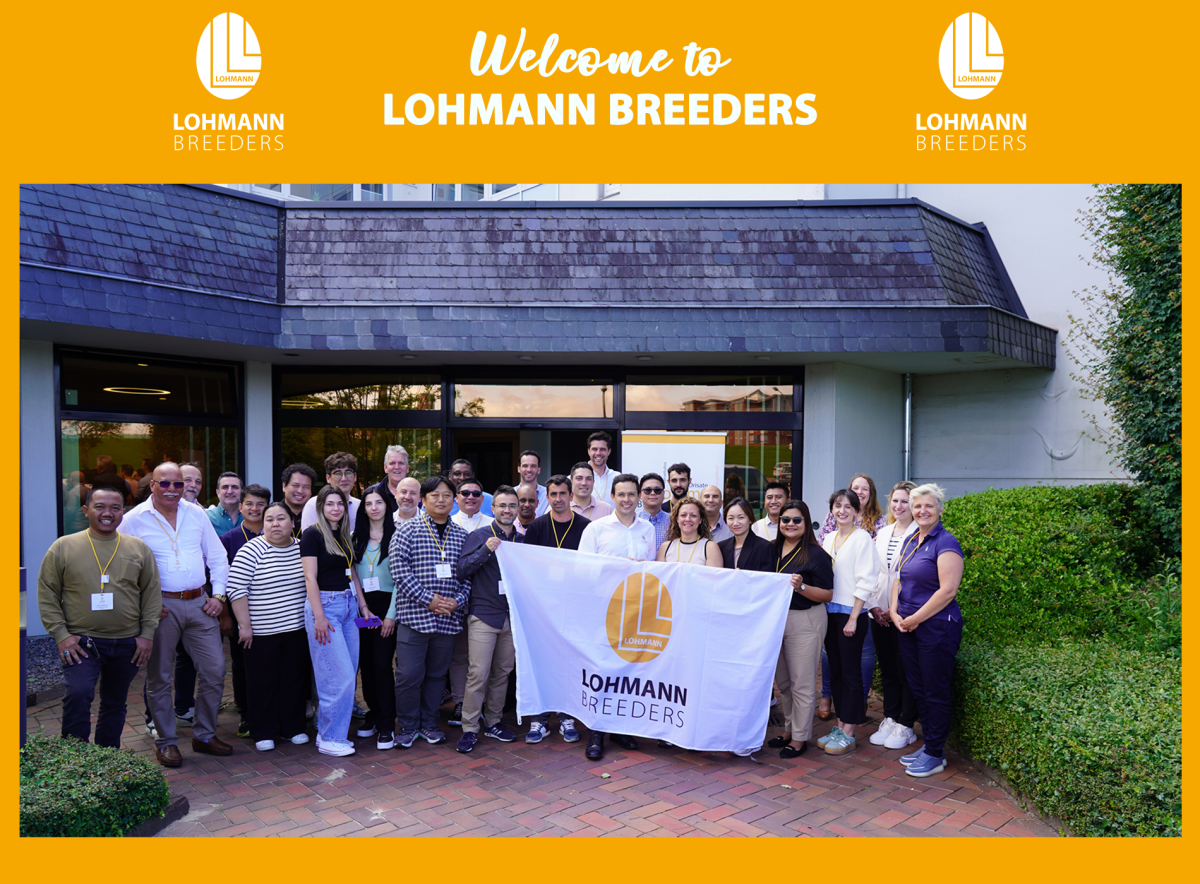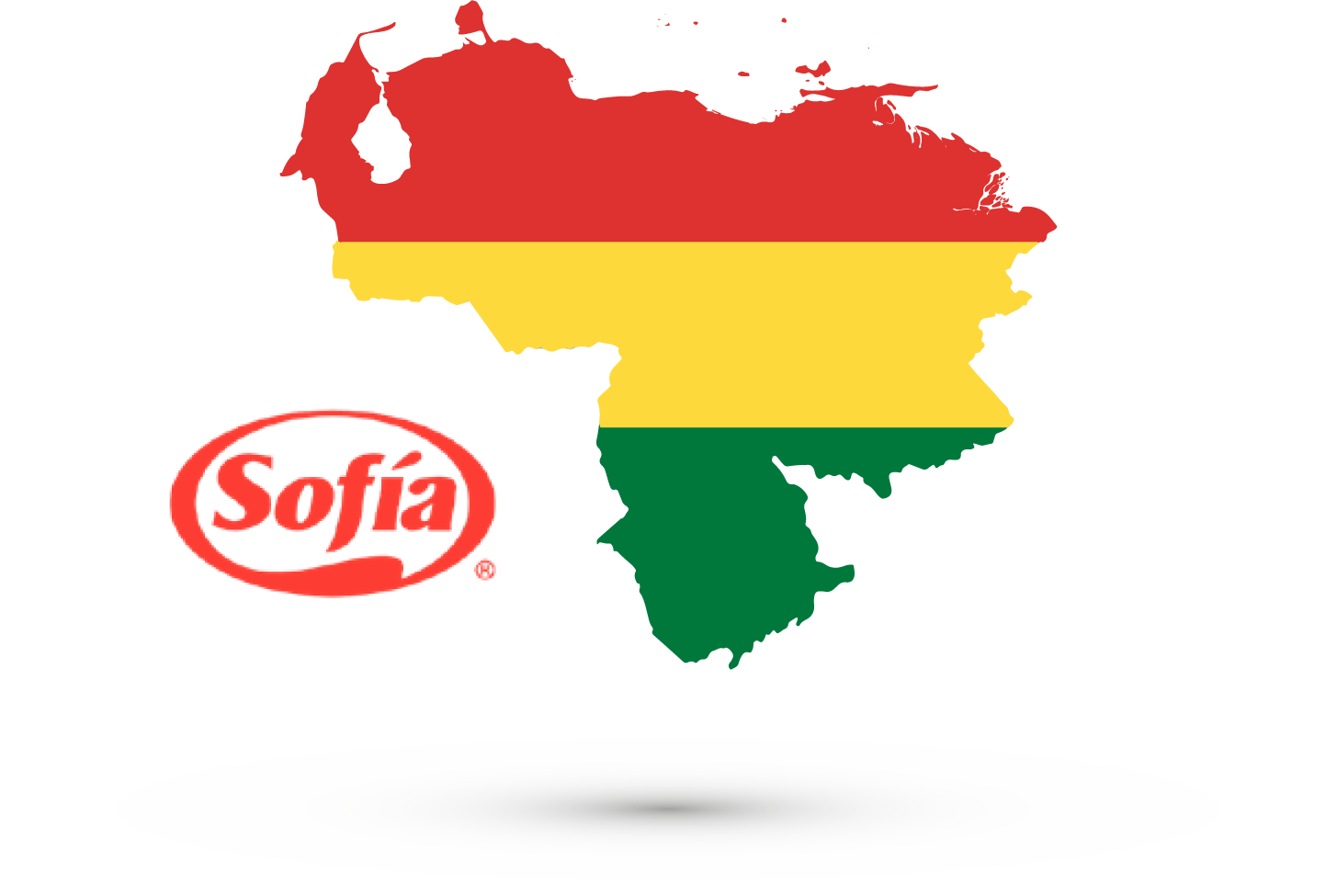Introduction
The domestication of horses and their progressive adaptation to changing human life styles has a long history. For thousands of years, horses were kept and improved by selective breeding to maximize their usefulness for transportation of people and goods in peace and war times. Technical innovations replaced work horses in agriculture and commerce, so that agricultural land could be used more profitably to produce food and feed.Times have passed when sport was the nicest matter of secondary importance on earth. Nowadays sport is an important part of the entertainment industry and a remarkable economic factor in the highly developed countries. Worldwide the turnover for sport exceeds 500 billion US $, including 200 billion just for ticketing.
We should clearly differentiate between two kinds of equestrian sport: the sport practiced daily by millions of people and the sport covered in the media. The first kind contributes significantly to the quality of life in a society: it involves learning and practicing fair play, responsibility, cooperation, efficiency and commitment as honorary office holders in local horse clubs.
The sport we know from the media is completely different. It concentrates on heroes who attract large audiences to commercially valuable TV-minutes and print media who cover victories and defeats, transfer money, personal interviews and scandals at great length. TOP SPORT is entertainment for the masses, the performance of the athletes are goods of the entertainment industry. This part of the sport is increasingly organized by commercial agencies. Regrettably, an important part of the potential value is being lost due to corruption, manipulation, cheating and violence. Sport is “big business”, and the economic importance is reflected in annual spending, in Germany estimated at 40 billion EUR or about 500 EUR per capita.
In equestrian sport, the borderline between leisure sport and competitive sport is less clearly defined than in other sports. Unique for equestrian sport is the feature that it is performed together with a living partner, who cannot speak and for whom the rider has to take full responsibility. Unique is also that women and men compete on equal terms.
In forecasting future developments, numerous factors should be taken into account, including tradition, wealth, degree of organization, stage of technology, emotionality and priorities in defining quality of life.
Development of the German horse industry since World War II
Germany has a long tradition in horse breeding as well as in horse sport. At the end of World War II, about 1.5 million horses were kept in Germany. The horse population decreased rapidly with the changes in agriculture and industry. The working horse was replaced by the motor, while agriculture focused on efficient production of food. By the early 1970s only 250,000 horses were counted in Germany, and some “experts” predicted a future with horses only in zoos.But then two developments rescued the horses: with increasing living standard, more and more families could afford one or more horses for hobby and sport, and with the introduction of more technology in daily life, there was a strong trend “back to nature” and to keep companion animals. The horse industry in Germany was well organized and able to satisfy the growing demand for riding horses. This in turn generated a strong demand for trainers, coaches, training facilities etc. With the boom in the 1980s, the number of horses in Germany increased to more than one million. Details are shown in table 1.
Table 1: Statistics describing the horse industry in Germany:

These figures reflect Germany’s position as No. 1 horse breeding nation in the world. Similar developments took place in some neighboring countries like France, Great Britain, The Netherlands, Sweden, Denmark, Italy and Belgium, in some cases with a considerable time lag. Looking ahead to the future, the chances for further growth of the horse business appear to be limited, not only in view of the demographic development with a declining and aging human population in Germany and other developed countries. The outlook for countries in Eastern Europe (especially Hungary, Poland and Russia), Asia, South America and even parts of Africa is more optimistic. With increasing personal purchasing power, some of these countries are likely to develop their own horse industry and enter the international competition.
The equestrian sport, like sport in general, is recognized by politicians as an important activity to reach people. Worldwide about 75% of all people are thought to be interested in sports, in Germany probably close to 85% of the population. This is a strong argument for politicians to be seen at major sport events and to express personal support. Unfortunately, political involvement is not always helpful for the sport in question.
The sport we see today developed during past decades in response to economic and political influence, and the result – whether we like it or not – seems irreversible. Today we discuss about TV-rights, merchandising, mobile leisure time society, sport tourism, betting industry, clothing and accessories – to mention just the most important factors. In some countries the contribution of sport to the GSP is in the region of 4% – with considerable potential for further growth with more leisure time. Not surprisingly, sport became an important factor for European policy in Brussels.
How important is the equestrian sport compared to other popular sports? In terms of club members, equestrian sport ranks only 7th in Germany, but in economic terms it involves much more turnover, because this sport requires the horse as an expensive partner. A study initiated by the German Horse Riders Association (IPSOS, 2000) estimated that equestrian sport contributes 5 Billion EUR to GSP, including 2.6 Billion EUR expenses for running costs and generates more than 300,000 jobs (3 – 4 horses per caretaker); more than 10 000 supply factories are living directly from the horse business.
These estimates demonstrate the economic importance of the horse industry. They are in line with corresponding figures in Switzerland, Austria, Sweden, Great Britain, France and the United States. Big events are of growing importance for national, regional and local economics. The operational budget of the World Equestrian Games in Aachen 2006 was about 20 Million EUR, of the WEG 2010 in Kentucky 64 Million US Dollar. A World Cup Final shows a budget of 5 Million EUR, a large national event between 1.5 and 3.0 Million EUR with growing tendency, resulting in increasing regional business.
The contribution of the WEG in Aachen to the region (Germany, Belgium, the Netherlands) was more than 230 Million EUR, for Aachen 60 Million taxes only. The United States of America calculated for the WEG Kentucky 2010 more than 200 Million taxes, 128 Million directly (restaurants, hotels, gate money) and 73 Million indirect (services, food, suppliers). These are good reasons for communities and regions to invest in these tournaments, and this is valid for smaller shows as well.
The future for this kind of horse business looks extremely positive. Presently the equestrian sport is strongly concentrated on Europe, especially Germany, France and Italy. About 80% of all equestrian activities (shows etc.) are taking place in Europe, about 10 % in North America and less than 10 % in the rest of the world. Encouraging is the fact that the increasing numbers are not (only) coming from the development in the traditional horse sport regions, but above all from upcoming nations.

We expect that the interest in equestrian sport will continue to grow and that the most important growth will come from developing regions of the world. This is good news for the horse industry.
Zusammenfassung
Die wirtschaftliche Bedeutung des Pferdes in der heutigen GesellschaftBreiten- und Spitzensport sind in den letzten Jahrzehnten zu einem bedeutenden Faktor in Politik und Wirtschaft geworden. Die Industrie rund um das Pferd leistet in Deutschland jährlich einen Beitrag zum Bruttosozialprodukt in Höhe von etwa 5 Milliarden Euro. Die zukünftige weltweite Entwicklung wird trotz einer Stagnation in einigen traditionell starken europäischen Ländern aufgrund des Nachholbedarfs in Osteuropa und der schnellen Entwicklung in Asien und auch Südamerika, von der Deutschland wirtschaftlich profitiert, ausgesprochen optimistisch beurteilt.







